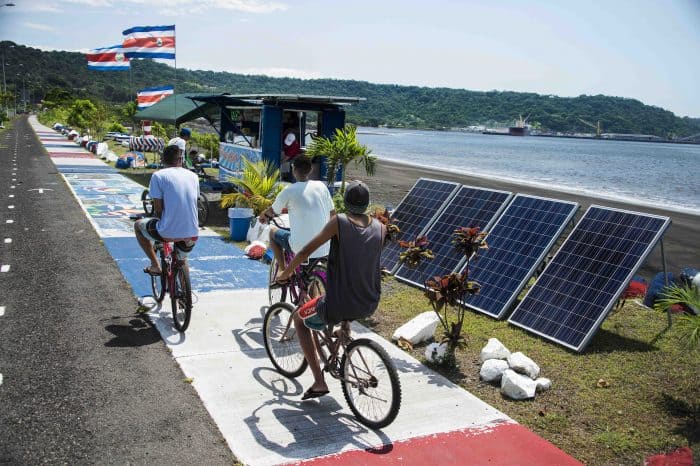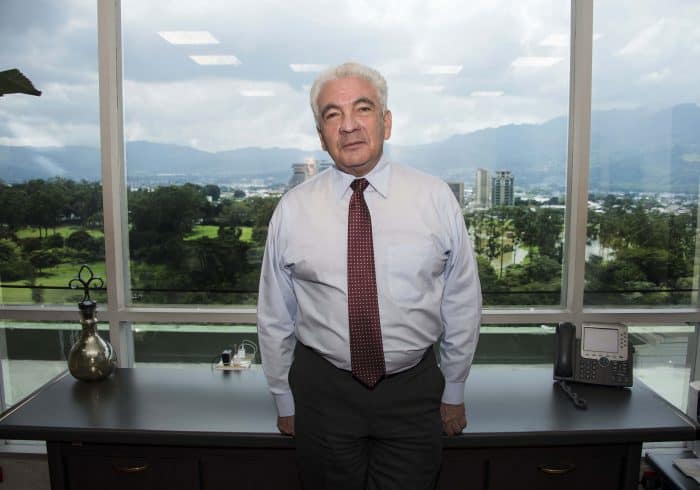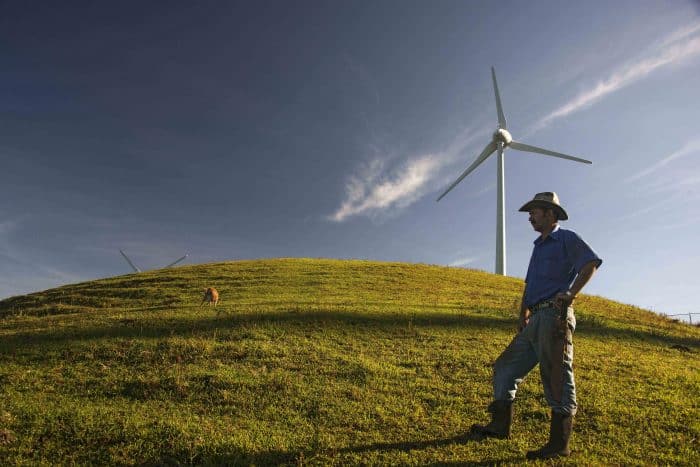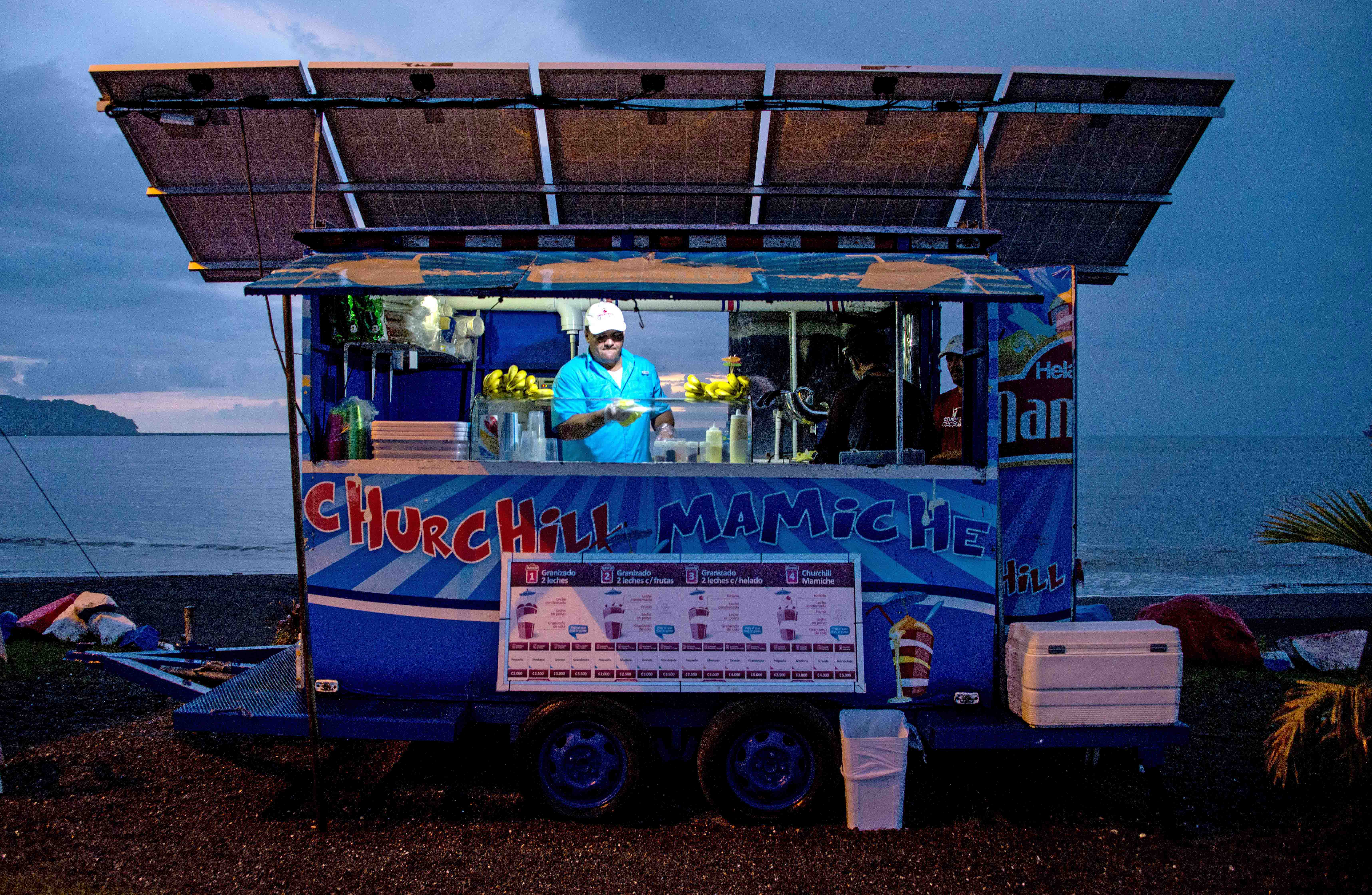CALDERA, Puntarenas – At dusk one weekend on Costa Rica’s tropical Pacific coast, Churchill vendor “Mamiche” is catering to a line of customers in front of his beachside flavored ice stand.
All looks balmy and typical — except for one little detail: The stand’s refrigerator, fan and lighting are not connected to the electricity network and there’s no noisy generator.
Instead, solar panels on the roof are providing the power, another sign of an eco-friendly push in Costa Rica that has made the country a model of development and clean energy.
The Churchill outlet’s owner, Luis Diego Vásquez, recalls how he used to spend up to $40 a day on fueling a smelly generator to keep the shop running.
“Fed up with the noise and the pollution, we started thinking about putting up solar panels to use the sun — something we have a lot of here,” he told AFP.

Renewable sources
With an electricity grid supplied by hydroelectric dams across rivers, from the heat of its numerous volcanoes, and from wind and the sun, the small Central American nation expects 97 percent of its energy generation to come from renewable sources this year.
“Costa Rica has renewable resources — a sun that shines. The wind. It has hydro resources. And all of that, along with geothermal and biomass energy, allows us to have such a renewable energy network,” Javier Orozco, planning chief at the national energy company ICE, told AFP.
Next to him, ICE’s CEO, Carlos Obregón, said the ultimate aim was to eventually have 100 percent renewable energy, “but that requires us to find a balance between different energy production, and that’s not a question of a year, but of many years.”
See: Deadline approaching for Costa Rica to set distributed generation fees

Still, the country caught the attention of the world ahead of December’s COP21 U.N. Convention on Climate Change in Paris by being totally reliant on renewable energy for the first 75 days of this year, with no recourse to its thermal plants using fossil fuels.
A report by the environmental protection group WWF last year highlighted the country as a Latin American leader in clean energy and predicted that in 2021 it would have an entirely renewable energy supply.

Polluting cars
But there is another side to Costa Rica, one that tarnishes its image as an environmentally conscientious nation: that of its congested roads, saturated with old cars and buses, many spewing smoke.
According to the Environment Ministry, the transport sector is responsible for 66 percent of hydrocarbon consumption and 54 percent of carbon-dioxide emissions, one of the principal gases responsible for climate change.
Despite its clean-energy network, Costa Rica produced 1.7 metric tons of CO2 per head of population between 2011 and 2015, on a level with other countries at a similar stage of development, such as Colombia or Uruguay, World Bank figures show.
Costa Rica has nearly 1.4 million cars for a population of 5 million. RITEVE, its roadworthiness inspection agency, says the average age of the vehicles is 16 years, which aggravates the emission problem.
In an effort to address the issue, one lawmaker, Marcela Guerrero, of the governing Citizen Action Party, last month presented a bill to lift import duties on electric vehicles for five years and to encourage ownership of CO2 emission-free cars.
She told AFP that she hoped to see 100,000 electric cars replace ones with conventional engines.
“We want users, with clear signals, to get behind a new pattern of consumption that will lower emissions,” she said.
Recommended: With COP21 talks in Paris moving forward after attacks, Latin America climate-change policies remain unclear

Electric train?
Another initiative is to start up an urban electric train system in the most populated center of the country, where the congested capital, San José, lies.
Although considered crucial from transport and environmental perspectives, lawmakers have made little headway in having the train project approved because of funding discrepancies.
Guerrero said she was confident a consensus allowing a vote would be reached by April 2016, and that the trains would be operational in the following five years.
The question is whether Costa Rica can maintain its clean energy goal while providing the sparks needed for electric transport.

Obregón is convinced that ICE will be able to handle the increased demand by deepening investment in non-conventional sources such as wind and solar power, which currently play a marginal role in its mix.
“We are preparing for a future where consumers are also [energy] generators,” making contributions to the grid through private solar panels and the like, he said.
If it goes that way, Mamiche’s little stand may end up selling not only ice, but fire.

